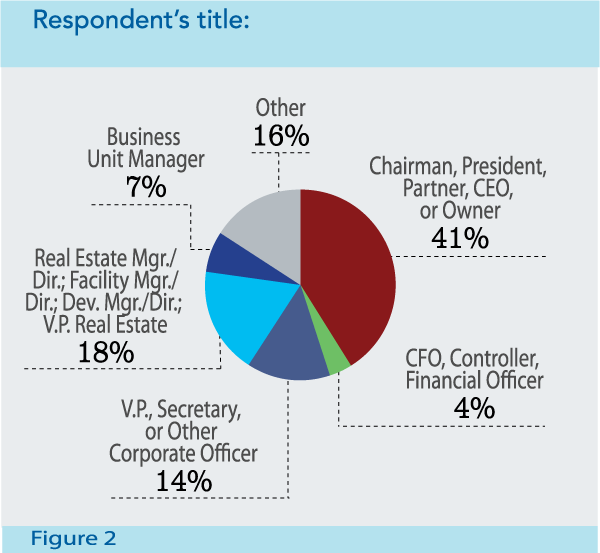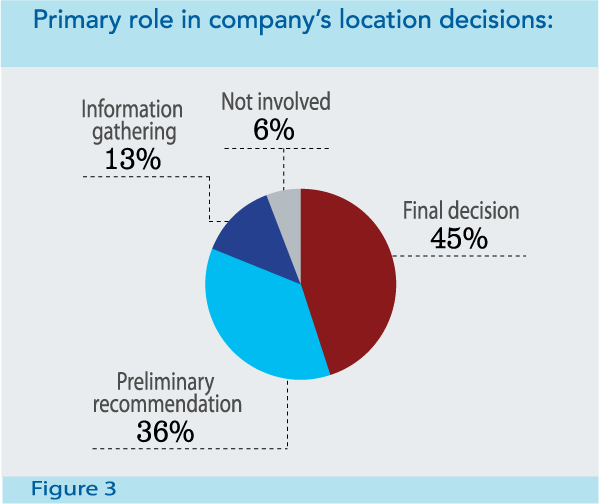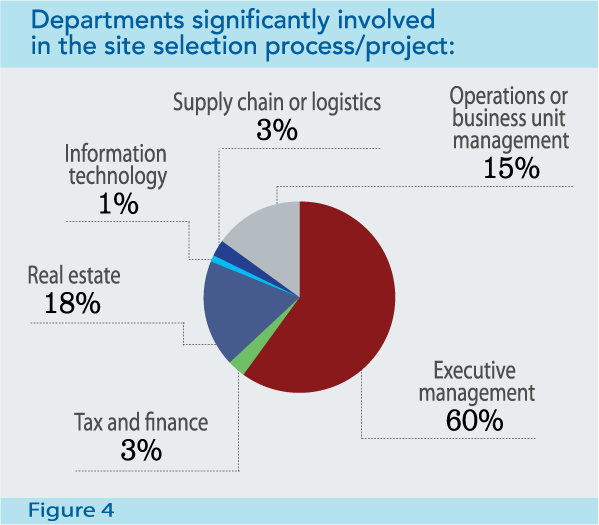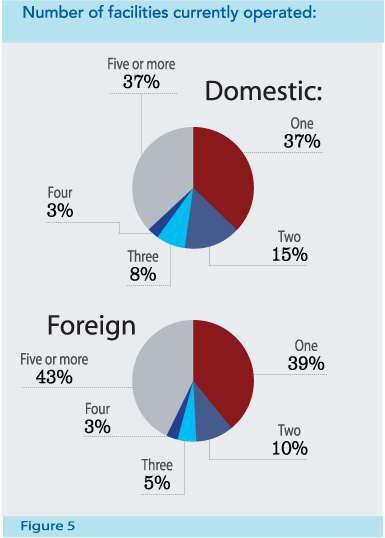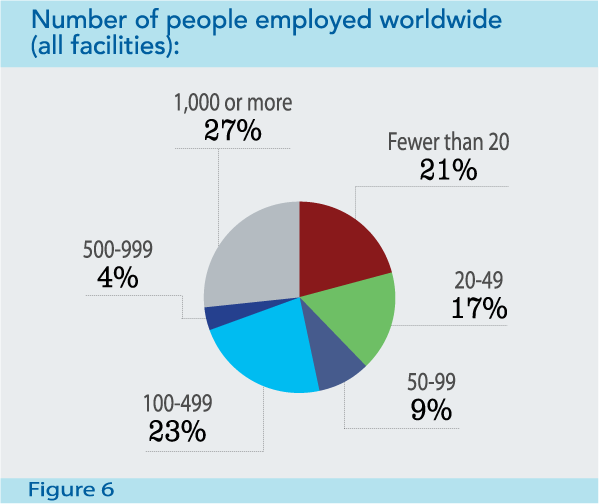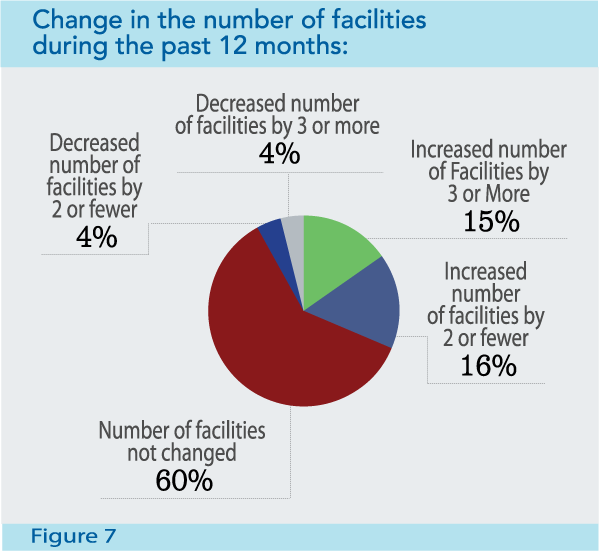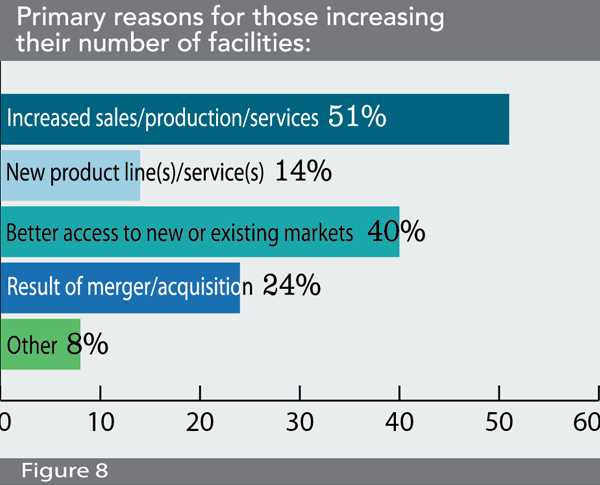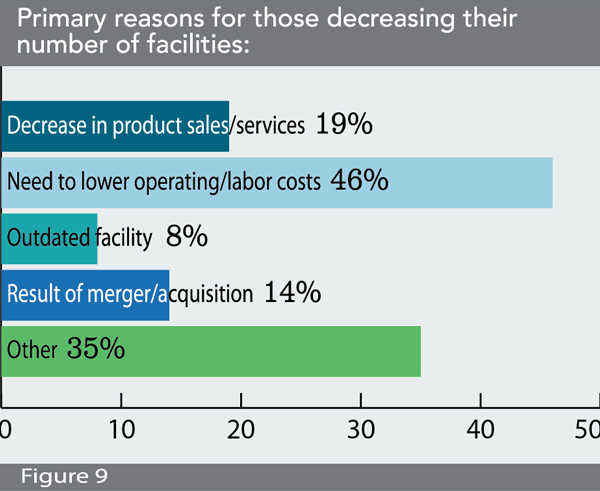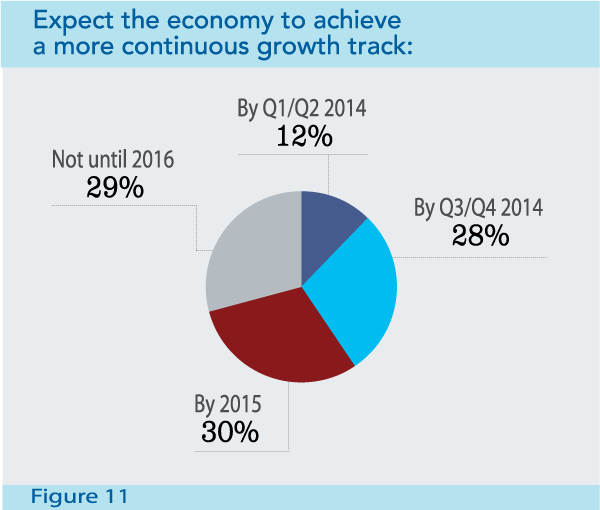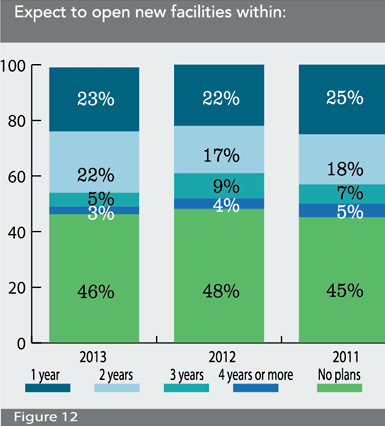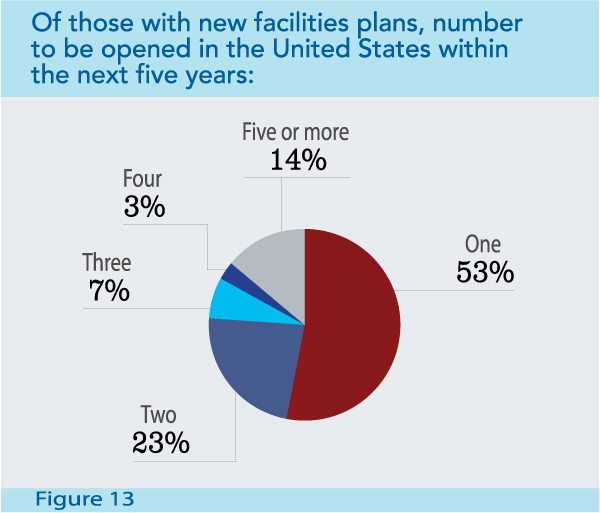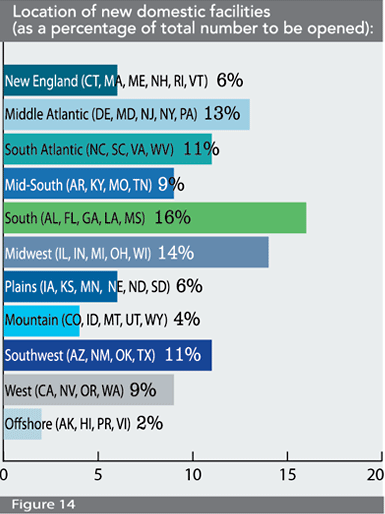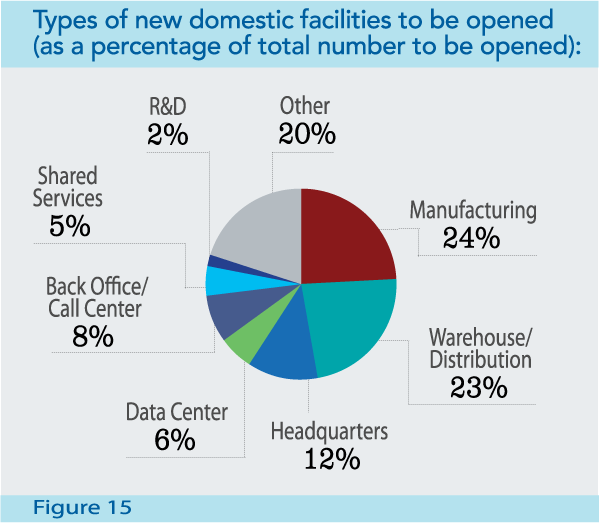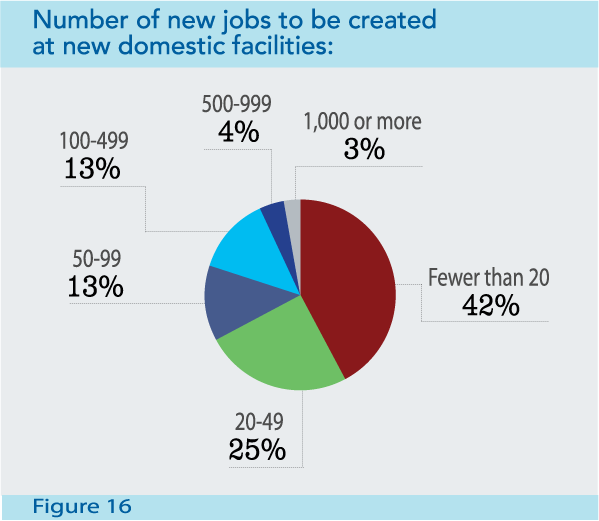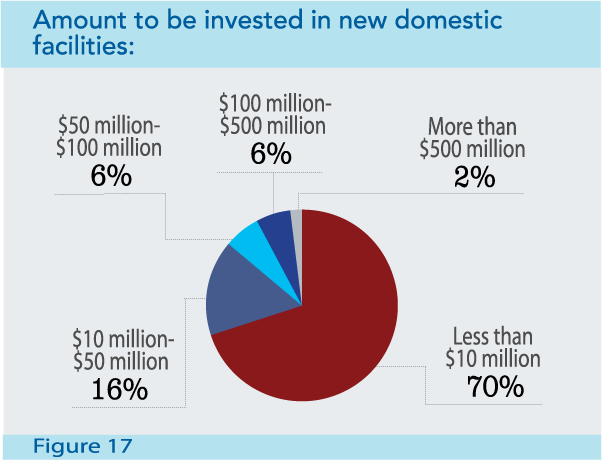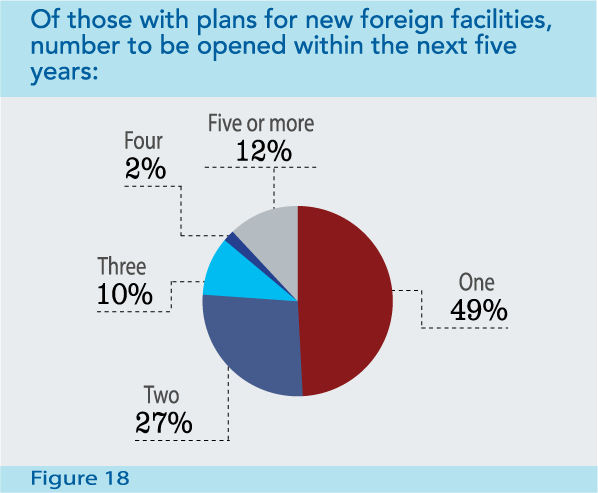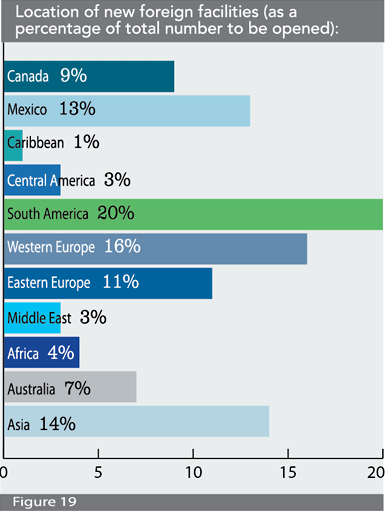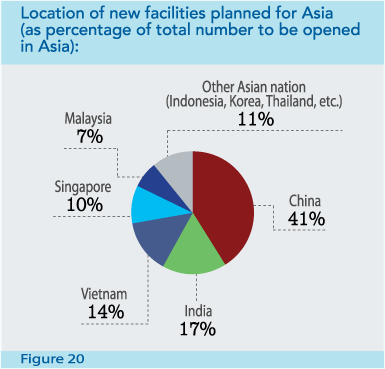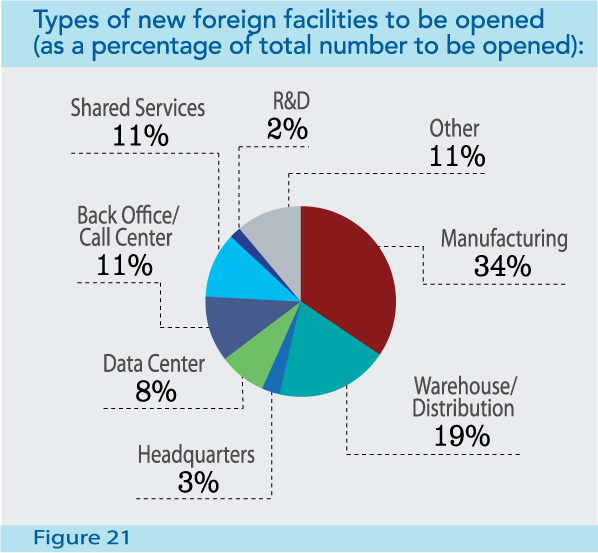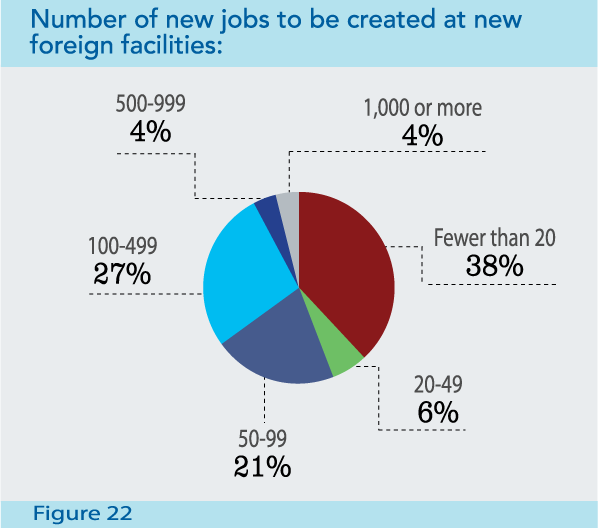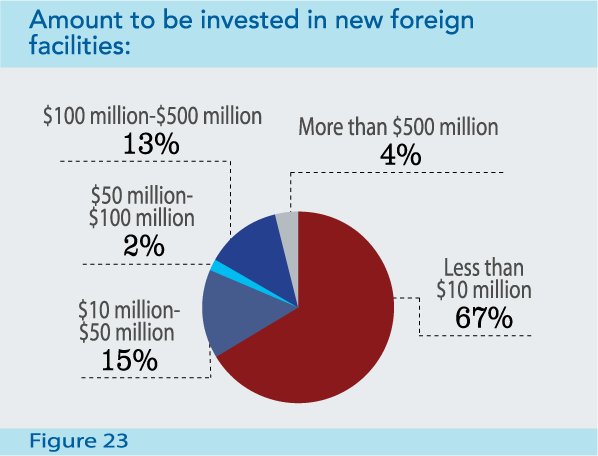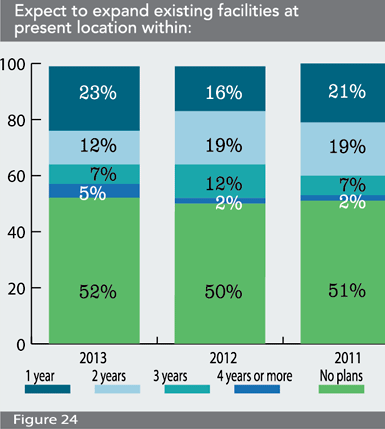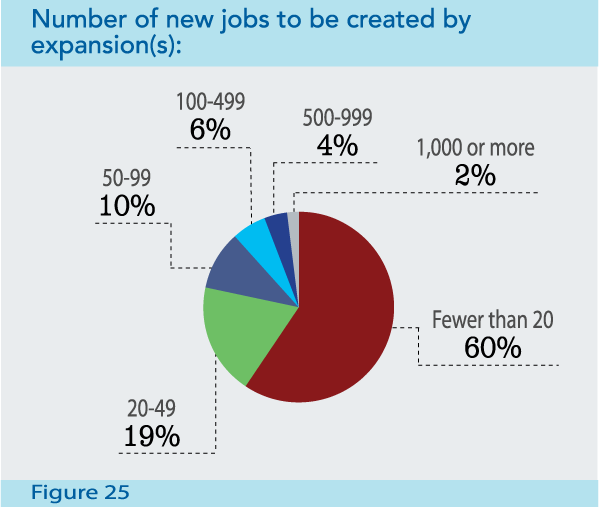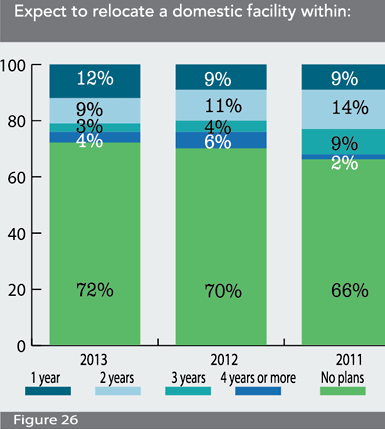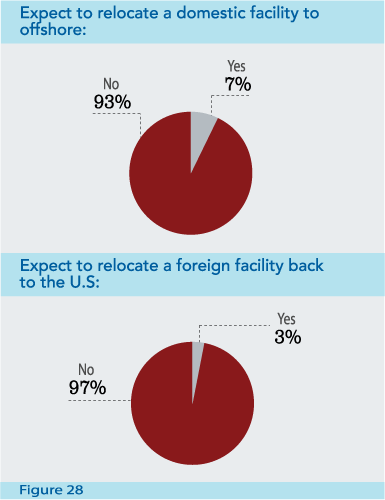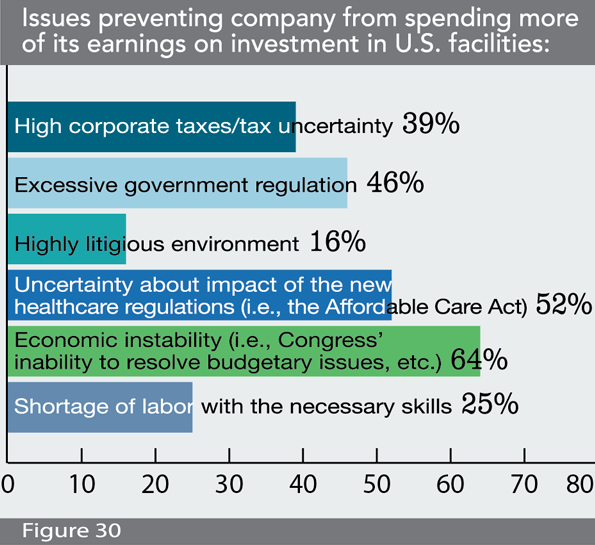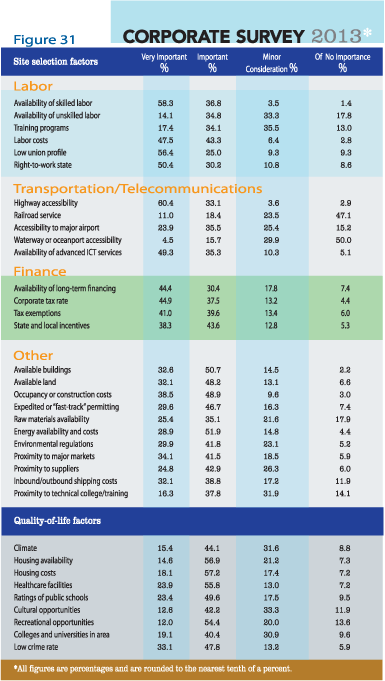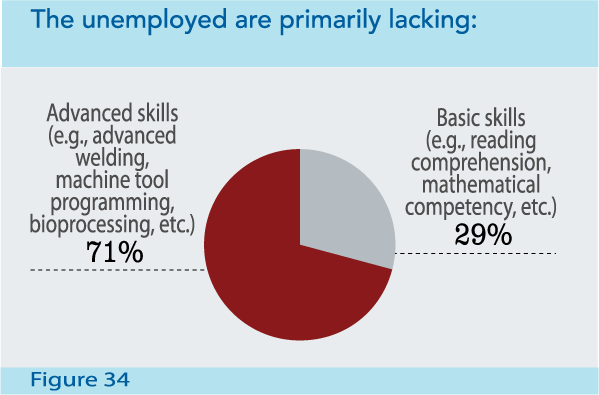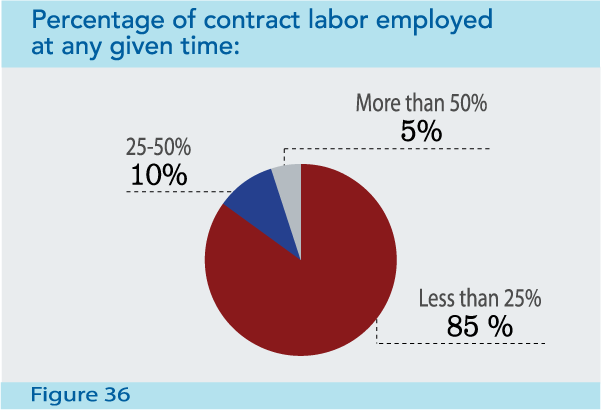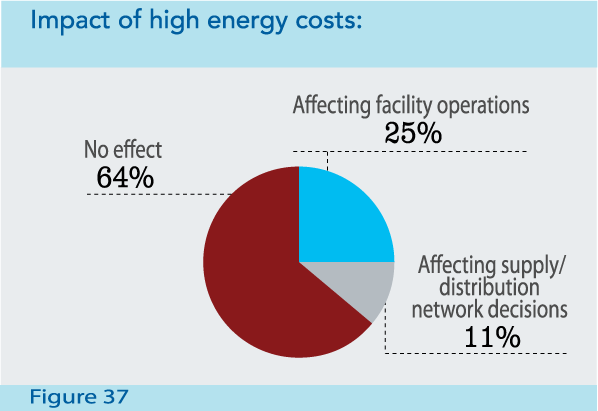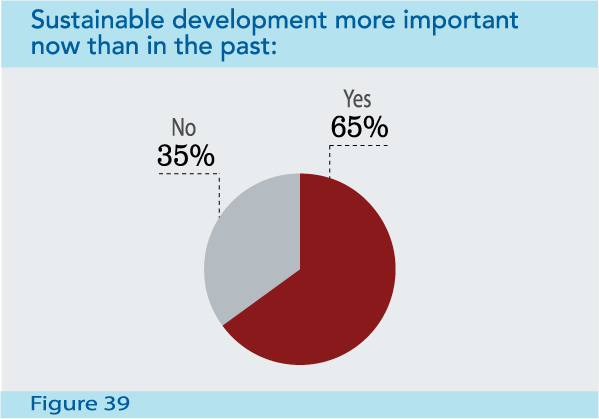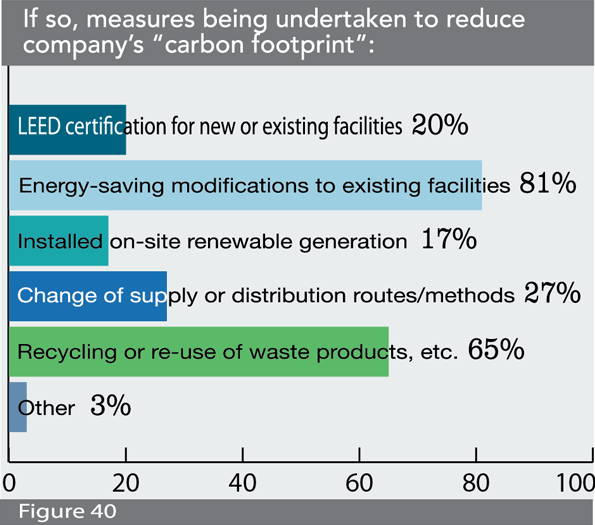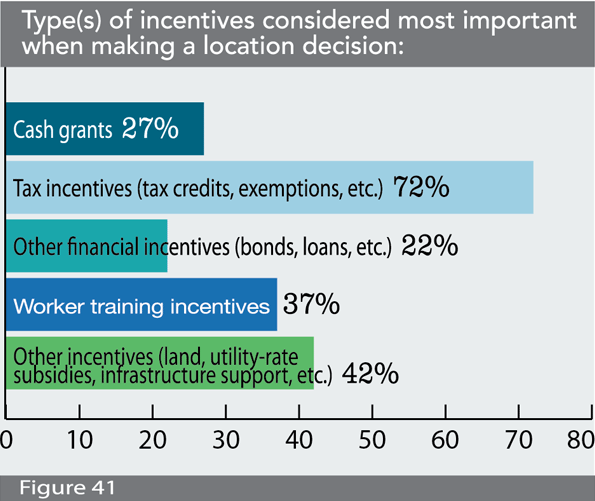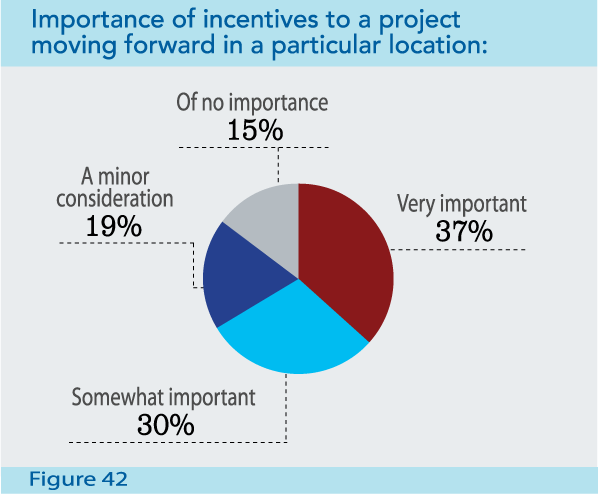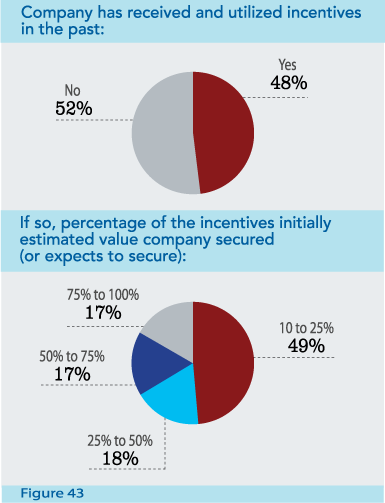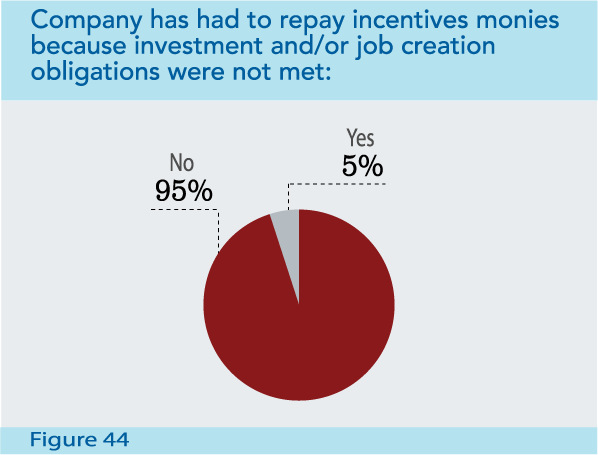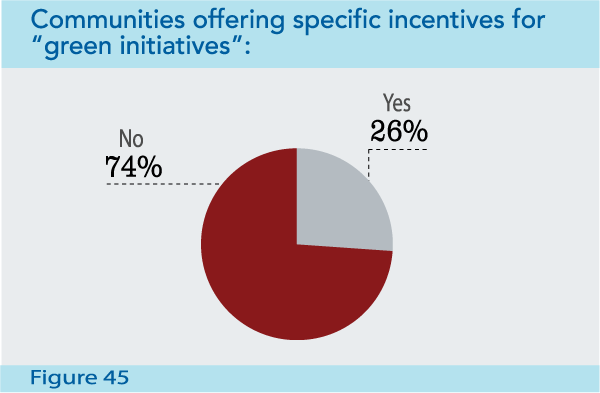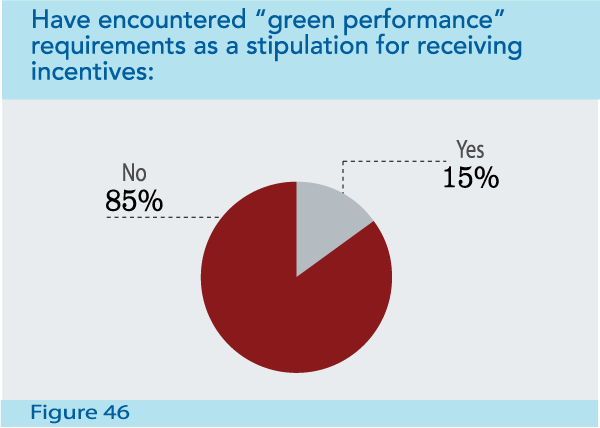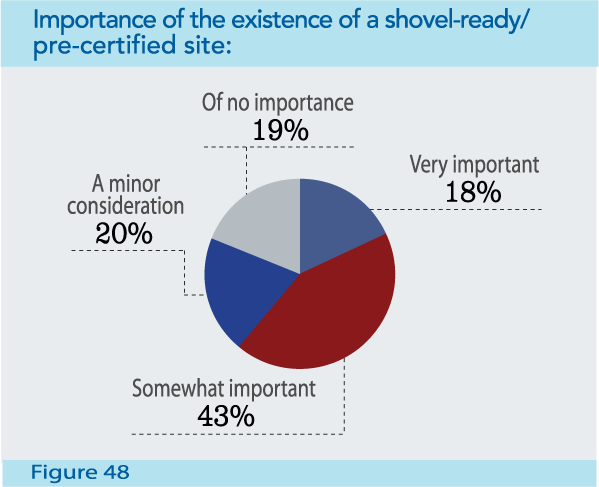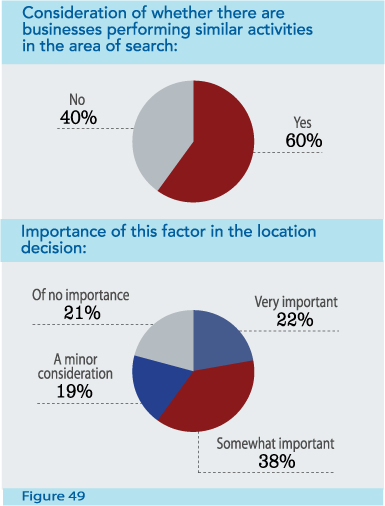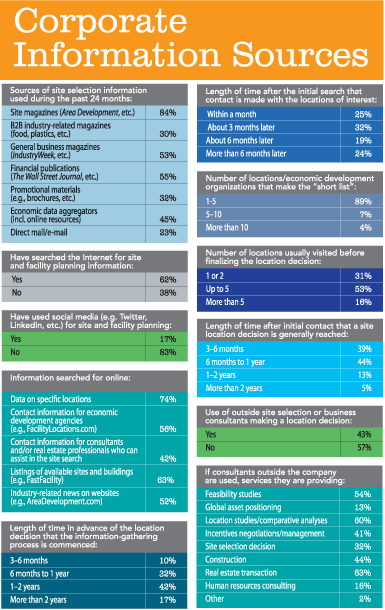Year-end news on the manufacturing front was also very encouraging. The Institute for Supply Management’s PMI ™ (Purchasing Managers Index) registered 57 percent in December 2013, the second highest reading of the year. Of 18 manufacturing industries tracked by the ISM, 13 reported growth in 2013’s final month. And December’s manufacturing Employment Index of 56.9 was the highest since June 2011.
The Labor Department reported that December 2013 overall job gains of 74,000 were less than previously expected. Commenting on the report, Capital Economics Chief U.S. Economist Paul Ashworth noted that he suspects the weakness was due in part to unseasonably harsh weather in December. However, unemployment reached a five-year low of 6.7 percent.
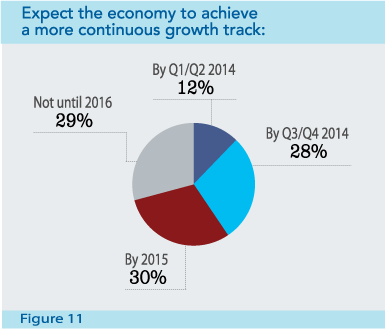
In order to find out if the corporate executives who read Area Development magazine also have more confidence in the U.S. economy, we asked them about their location and expansion plans and site selection priorities for the year ahead. Our survey was conducted in the fall of 2013. By the time we went to press on this issue in February 2014, continued severe winter weather was having a dampening effect on the economy. Nevertheless, these are the results of our Corporate Survey as recorded in Q4 2013.
The Corporate Survey Respondents
All told, 240 individuals responded to our 28th annual Corporate Survey. Of those, the majority (39 percent) are with manufacturing companies, and about a fifth represent the financial services/insurance/real estate sector (Slideshow, Figure 1). More than 40 percent are also the owners or chief executives of their firms, and 18 percent manage their companies’ real estate assets (Slideshow, Figure 2).
It follows that 45 percent of the respondents make their firms’ final location decisions, while 36 percent give a preliminary recommendation (Slideshow, Figure 3). Sixty percent claim that the primary player in their companies’ location decisions is executive management, but 18 percent say their companies’ real estate departments are significantly involved (Slideshow, Figure 4). The results of the Corporate Survey do show a modest improvement in short-range new facility and expansion plans
Interestingly, the same percentage say their firms operate just one domestic facility as five or more domestic facilities — 37 percent in each case. When it comes to foreign facilities, 39 percent of the respondents say they operate just one, while 43 percent indicate their companies operate five or more (Slideshow, Figure 5).
Nearly half of the respondents (47 percent) report their companies employ fewer than 100 people, but nearly a third (31 percent) employ 500 or more workers (Slideshow, Figure 6).
The majority (60 percent) experienced no change in the number of their companies’ facilities over the 12-month period prior to the survey. However, 31 percent did increase their number of facilities (Slideshow, Figure 7) — up from 29 percent who made that claim when taking the 27th annual Corporate Survey. More than half say this was in response to increased sales/production, and 40 percent say new facilities were added to give their companies better access to new or existing markets (Slideshow, Figure 8). Of the just 8 percent of the respondents who claim to have decreased their number of facilities over the past 12 months, nearly half (46 percent) report they did so in order to lower operating and/or labor costs (Slideshow, Figure 9).
On another positive note, when asked about the effect of the slow economic recovery on their facility plans, 20 percent of the respondents to our 28th annual Corporate Survey say they still plan to open new facilities and 30 percent say they will increase hiring (Slideshow, Figure 10) — up from 20 percent who made that claim in response to the same question in 2012. Only 10 percent say the slow recovery would cause their companies to close or consolidate facilities — down from 15 percent in 2012. In fact, 40 percent of the respondents expect the economy to achieve a more continuous growth track this year (Slideshow, Figure 11). In 2012, 56 percent of the corporate respondents were projecting the economy would not improve for at least one to two years.

When asked specifically about their timeline for opening new facilities, 45 percent of the respondents say they expect to open new facilities within a year or two (Slideshow, Figure 12) — up from 39 percent who had short-range new facility plans in 2012. However, when it comes to the number of new U.S. facilities to be opened, this year’s Corporate Survey respondents are proceeding more cautiously: More than half expect to open just one new domestic facility, about a quarter will open two, and another 24 percent will open between three and five or more (Slideshow, Figure 13). In 2012, 39 percent of the respondents expected to open just one domestic facility and 35 percent had plans for three to five or more.
The overall locations slated for new U.S. facilities, however, have not changed significantly. Once again the South (Alabama, Florida, Georgia, Louisiana, Mississippi) is the regional favorite, projected to garner 16 percent of the new domestic facilities, followed by the Midwest (Illinois, Indiana, Michigan, Ohio, Wisconsin) at 14 percent (Slideshow, Figure 14). There is a slight uptick in projects planned for the Mid-Atlantic region (Delaware, Maryland, New Jersey, New York, Pennsylvania) — 13 percent of the domestic new facility projects will go there, followed by the South Atlantic (North Carolina, South Carolina, Virginia, West Virginia) and the Southwest (Arizona, New Mexico, Oklahoma, Texas), with each region expected to garner 11 percent of the total projects.
Manufacturing and warehouse/distribution facilities represent about a quarter each of the new domestic projects (Slideshow, Figure 15). Nevertheless, two thirds of the Corporate Survey respondents say these facilities will be small in terms of their employment numbers with fewer than 50 workers (Slideshow, Figure 16), and fully 70 percent say they will represent an investment of less than $10 million (Slideshow, Figure 17).
About half of the respondents to the 28th annual Corporate Survey also plan to open just one new foreign facility, while another quarter plan to open two (Slideshow, Figure 18). There has been an interesting change in where the responding corporate executives will place these new foreign facilities. One fifth of the new foreign facilities are slated for South America and 16 percent for Western Europe (Slideshow, Figure 19) — up from 12 percent for each region as planned by 2012’s Corporate Survey respondents.
Importantly, plans for Asia have been halved — just 14 percent of the new foreign facilities are currently planned for this region by the survey respondents, down from 28 percent planned for Asia by 2012’s respondents to our Corporate Survey. Specifically, China will garner 41 percent of the new facilities planned for Asia (Slideshow, Figure 20) — down from 64 percent projected to go to that nation by 2012’s Corporate Survey respondents. This is no surprise considering the fact of China’s rising labor costs, which have made other Asian destinations more desirable. Case in point: New facilities planned for Vietnam comprise 14 percent of total Asian facilities planned by this year’s survey respondents, up from just 5 percent in 2012. Plans for new facilities in India remain steady at 17 percent of the total.
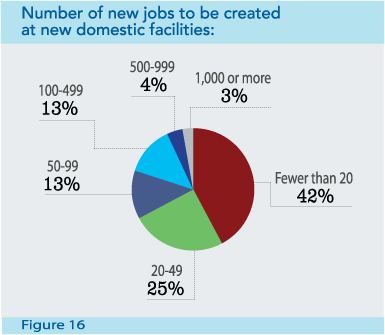
What is preventing the respondents’ firms from investing more money in U.S. facilities? Nearly two-thirds cite the United States’ economic instability, i.e., inability to resolve budgetary issues; more than half are concerned about the impact of new healthcare regulations (Affordable Care Act) on their businesses; and 46 percent blame their lack of spending on excessive government regulation (Slideshow, Figure 30). In fact, these concerns were also cited in the Q4 2013 National Association of Manufacturers (NAM)/IndustryWeek Survey of Manufacturers: 77.2 percent of those respondents cited rising healthcare/insurance costs as a current business challenge; and 76.1 percent cited unfavorable business climate, including taxes, regulations, and government uncertainties.
The short-term expansion plans of the respondents to our 28th annual Corporate Survey are more robust than the expansion plans of 2012’s survey respondents — 23 percent say they will expand a facility at their present location within one year (Slideshow, Figure 24). In 2012, only 16 percent of the corporate respondents said they had one-year expansion plans. However, expansion plans two to three years out are down from 31 percent in 2012 to just 19 percent for 2013’s respondents. Additionally, 60 percent say their expansions will create fewer than 20 jobs (Slideshow, Figure 25), while only 49 percent made that claim in 2012.
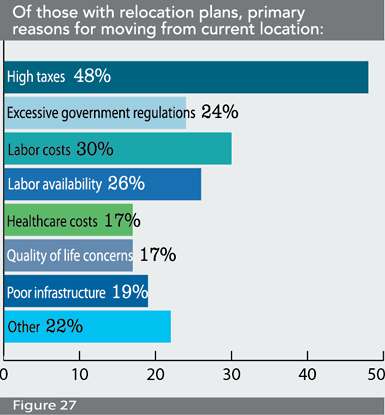
Nevertheless, only 7 percent expect to relocate a domestic facility offshore. And, although the news is full of reports of U.S. manufacturers re-shoring operations, just 3 percent of this year’s Corporate Survey respondents claim they will actually locate a foreign operation back to the United States (Slideshow, Figure 28). An interesting op-ed piece in The New York Times (1/25/14) speaks to the fact that this re-shoring trend creating a manufacturing “renaissance” represents only a trickle of jobs coming back to the U.S. In response to our survey, the small percentage re-shoring cite rising foreign labor costs, problems finding qualified and/or English-speaking labor, and costs of transporting supplies/products as their primary reasons for doing so (Slideshow, Figure 29).
Next: Factors in the Location Decision

